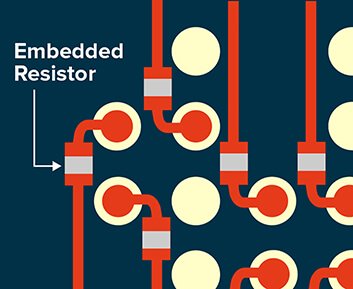
Why Do PCB Jobs Go On Hold?
There is an extensive amount of precise data needed to build a Printed Circuit Board. As the layer count and complexity increase, so does the amount of correct information needed by the PCB fabricator to properly manufacture the job. If any part of the data is missing, the CAM operator will hand the file back to sales to sort out the problems. Your much-needed PCB job goes on hold.
DON'T GUESS IN PRINTED CIRCUIT BOARD MANUFACTURING
The one rule that all PCB manufacturing facilities hold strong and dear to their heart is, we don’t guess. If you break the rule, it is guaranteed to bite you hard. To ensure no one is guessing, every question has to be answered. If there is a tolerance missing on a set of holes, the job will go on temporary hold until the CAM person can get a suitable answer. If there is an electrical short between ground power layers due to a misplaced via, the job goes back to sales to sort out. When a job is on hold for a serious problem it can cause days of delay. If there are one or two small issues, usually the CAM operator or sales will call and sort it out. A trace or two can be moved to prevent a short, or a pad size increased to correct a problem with too small an annular ring. However, the CAM operator has to get their quota of x number of jobs out each day to keep the manufacturing facility fully loaded. The CAM operators do not have a lot of time to fix a mirage of problems in the data. In that scenario, the CAM operator hands the file back to sales for them to reject the data and request the customer fix the problems then resubmit it through the whole process of quotation and the design rule check in PCB and set up.
COMMON MISTAKES RESULTING IN JOB ON HOLD
Some of the more common mistakes that result in jobs going on hold are:
- Missing data, a drill file
- Solder mask or nomenclature white marking file not in the CAD package. (common)
- Missing or wrong information on drawing of outside dimensions
- Missing specifications of laminate, in hole plating and surface finishes (very common)
- Shorts or space violations in trace spacing (difficult for the CAM engineer to fix easily)
- Hole size in relationship to pad size too small, violating clearance spacing between pads
- Spacing violations of clearance of solder mask around pads (common)
- White identification nomenclature marking across pads (common)
- Improper sequence of drilled holes in a buried via multilayer
- Hole sizes too small or too large, in relation to pad size and annular ring requirements (common)
- Through via holes short out ground planes to power planes (common)
- Specifying a square inside corner in final routing (router bits are round)
- As PCB requirements get more complicated, more missing information and technical items start to become even more important and are quite often not specified. A very common error is where a particular impedance is specified, but it cannot be met due to thickness of material or Dk of the specified material.
These examples and many more, result in the job going on hold and multiple calls/emails can be required to answer the questions, causing additional delay.
PCB JOBS AT FINELINE
One particular customer seemed to always be in the ‘rejected-on hold’ bin at the sales desk. After a stressful initial meeting, they were asking, why their printed circuit boards are always on hold at our facility, whereas another PCB manufacturer just built them. Our engineering team walked them through what they were missing on the drawing package. One point they brought up was that the printed circuit boards they bought from different manufacturers operated in different ways. It was pointed out that because their PCB specification sheet was so lacking, the other printed circuit manufacturers gave them different laminates which they had in stock. Different plating thicknesses were produced because it was not specified and different solder masks were used. Our engineers carefully explained why these are small changes that a printed circuit board manufacturer can make if not specified. During the long meeting, it was pointed out to the buyers and designers, that a simple change in laminate, solder mask and plating thickness would change the impedance by a considerable amount. They agreed to specify on the manufacturing drawing a particular laminate which had a stable supplier and was well known for quality product. The CAD manager showed them how a change in specified plating thickness would affect their yield and future reliability, and if they specified a minimum plating thickness of 1.2 mils copper in the hole, it would greatly improve their yields out of wave soldering, and increase thermal cycling life, hopefully, solving one of their major problems. As the meeting progressed, we asked for well over twenty additions and changes to the technical specifications of the build sheet and for them to add more technical data to their technical drawings to ensure a tighter set of specifications.
The plant manager took them for a tour of the printed circuit board manufacturing facility and showed them why we don’t guess. They were first shown the lamination storage area with literally hundreds of different laminate types and each one had twenty different thickness and copper weights. During the show and tell of the rest of the facility the engineers and buyers witnessed so many different ways to build the same product. They fully understood why so many tight specifications are needed when a more critical printed circuit board is required. They were appreciative of all the information needed to keep their Printed Circuit Board order out of the dreaded hold basket.









